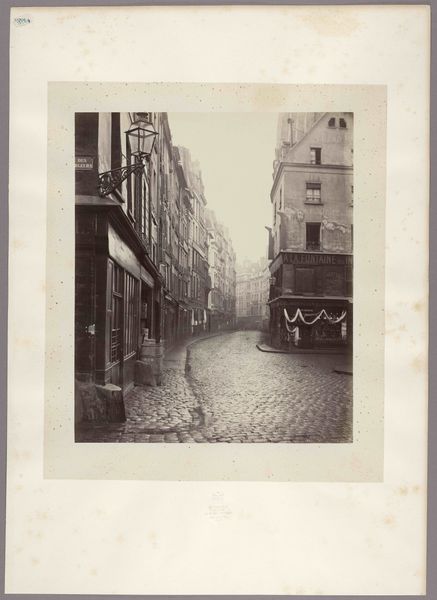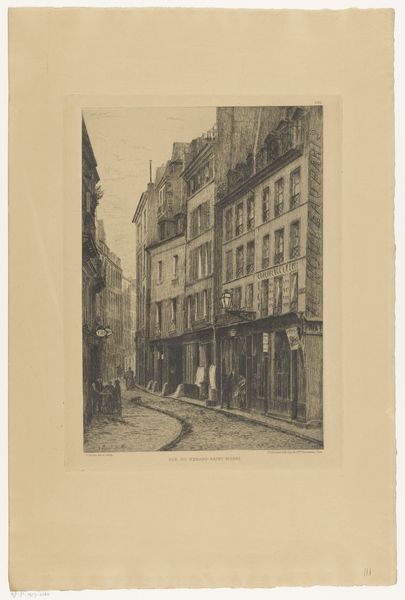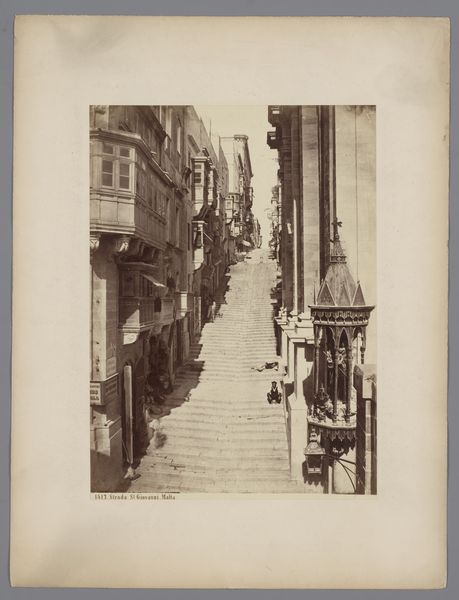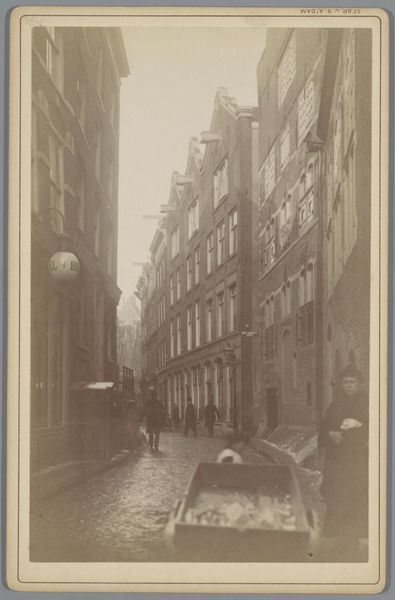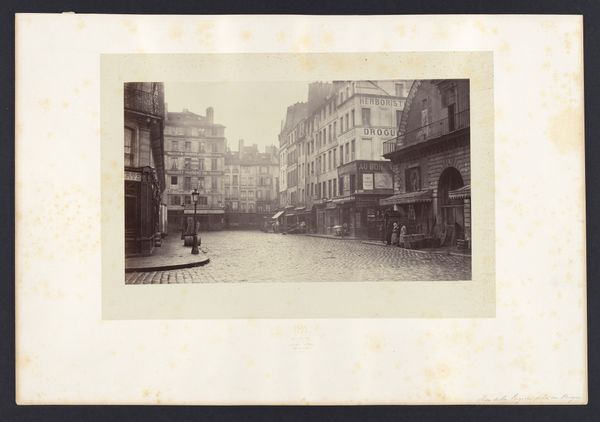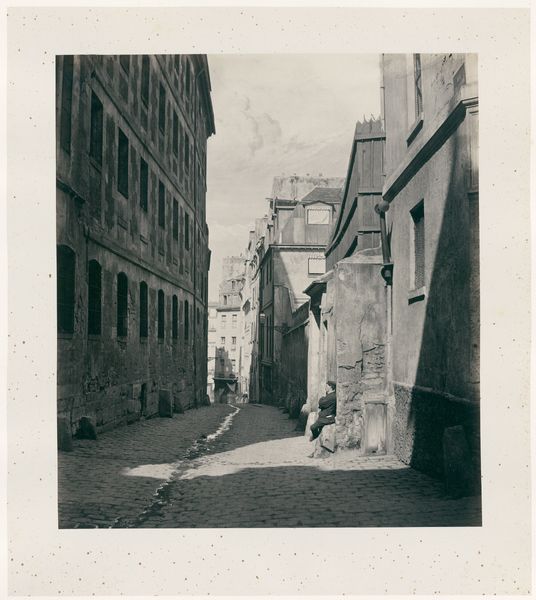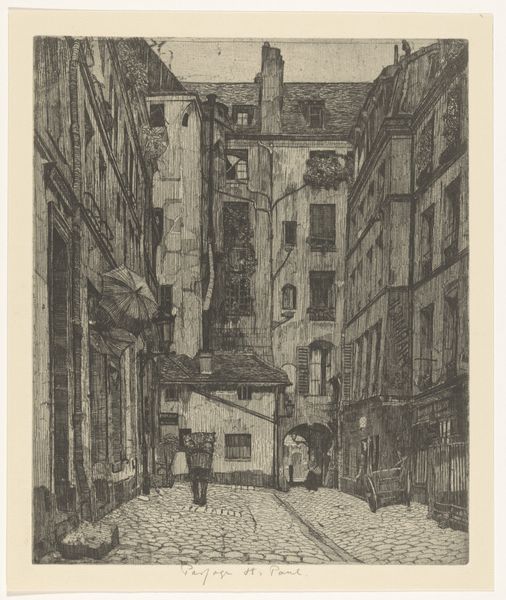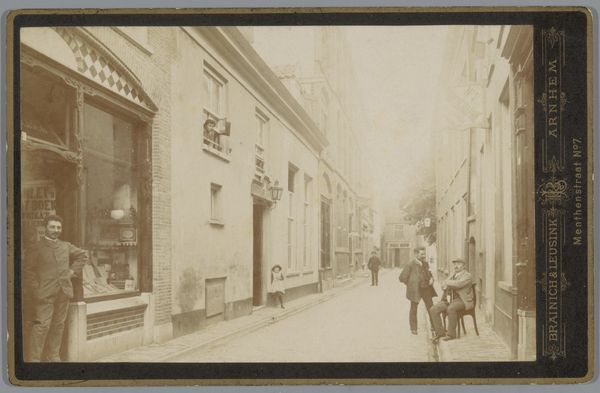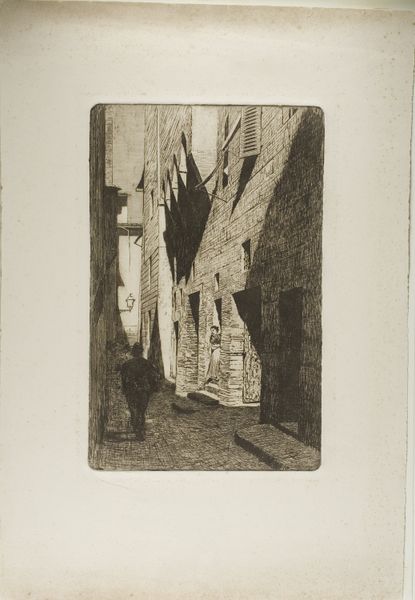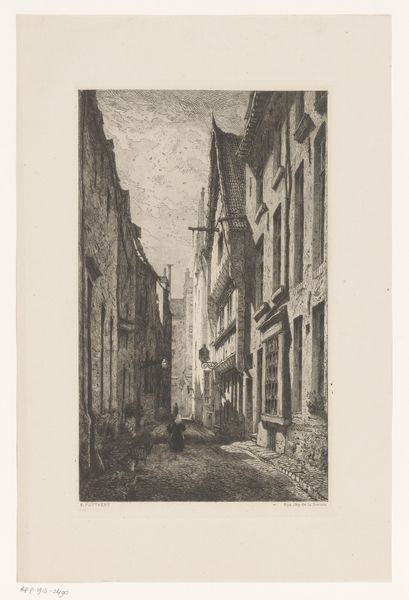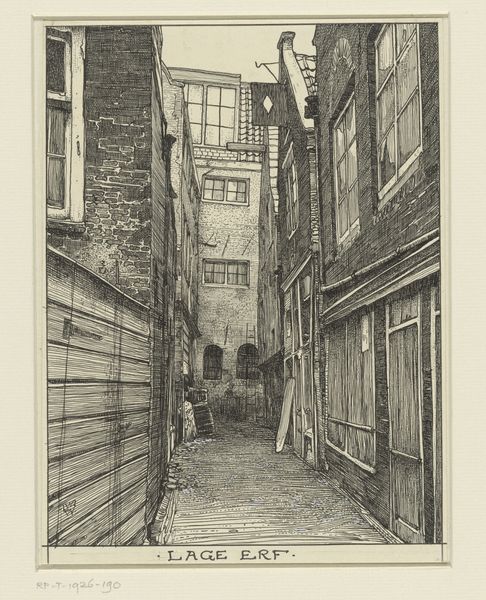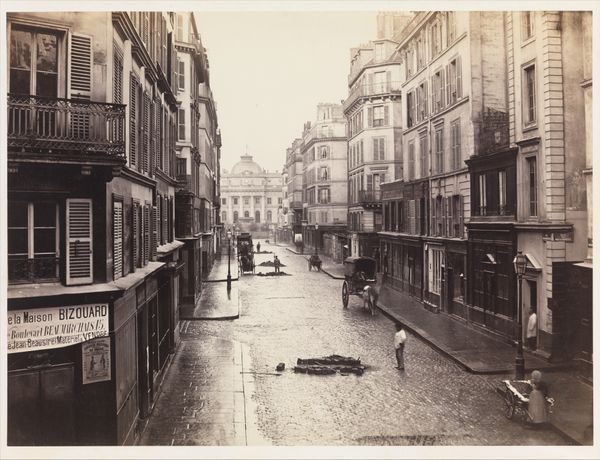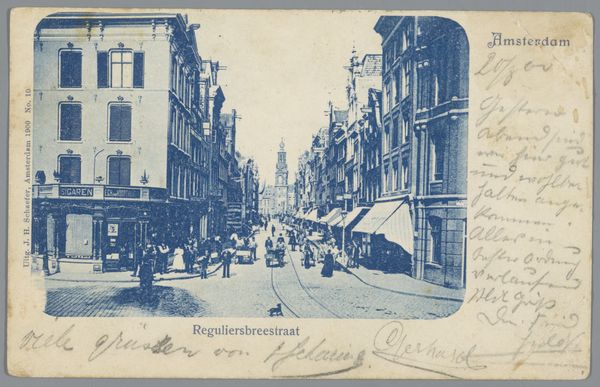
photography, gelatin-silver-print
#
street-photography
#
photography
#
gelatin-silver-print
#
cityscape
#
realism
Dimensions: height 92 mm, width 142 mm
Copyright: Rijks Museum: Open Domain
Curator: This gelatin-silver print, possibly dating to 1926, is entitled "Prentbriefkaart aan Jan Ponstijn" by Leo Gestel. The work now resides here at the Rijksmuseum. Editor: My first thought is of stillness—a captured quietude despite the suggestion of movement. There’s a street art image of an acrobatic figure painted on a wall that’s rather playful, especially compared to the old street itself, receding into the background. Curator: Indeed, Gestel very effectively uses the photographic medium to play with flatness and depth. Note how the composition emphasizes the architectural geometry of the buildings framing the distant Sacré-Cœur. The varying textures and tones create an intriguing visual rhythm. Editor: Right, but consider that Gestel composed this image during a period of significant social and artistic upheaval. That mural may function as more than a stylistic device. Could it speak to the growing performance and commodification of identities in urban spaces, or a kind of class commentary? The contrast with the more subdued tones of the buildings might highlight the tensions between lived reality and idealized representations. Curator: That's an interesting point, but I'm not sure the contrast suggests tension per se. I perceive a harmony between elements, where the geometric arrangement of forms leads to a cohesive visual experience that supersedes individual meaning-making. Editor: Still, I believe the use of the gelatin-silver process connects it with issues related to archival memory. Perhaps Gestel is attempting to immortalize not just a physical place, but also a fleeting social moment? In essence, creating an archive of urban existence and modern life’s instability. Curator: Undoubtedly, you raise valid points about Gestel’s layering. On balance, the photograph functions primarily as an exercise in formal composition, showcasing the inherent potential of photographic printmaking. Editor: But sometimes that technical refinement can blind us to social messages inherent in photographic records. Curator: True, both formal observation and socio-historical analysis offer uniquely powerful windows. Editor: Precisely, together these analyses offer a more holistic viewing experience of a layered image from a particular place and time.
Comments
No comments
Be the first to comment and join the conversation on the ultimate creative platform.
